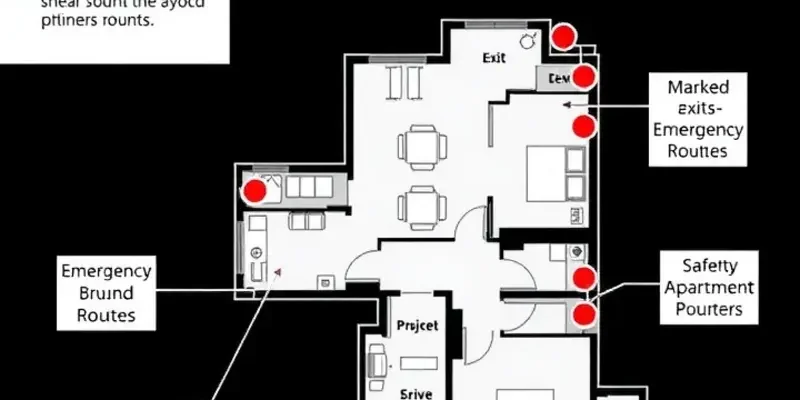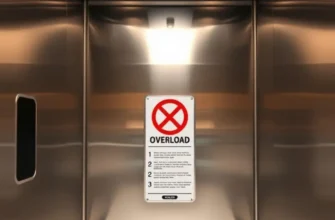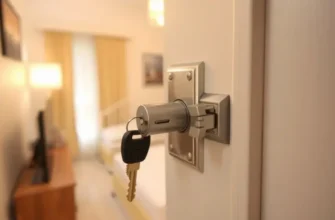Apartment living offers many conveniences, but it also requires an understanding of safety protocols, especially during emergencies. As renters, it’s crucial to have an evacuation plan that keeps you and your belongings safe while being straightforward to implement. Whether it’s a fire, natural disaster, or unforeseen incident, knowing how to respond can mean the difference between chaos and calm. This guide addresses the best practices for creating an effective evacuation plan tailored specifically for apartment dwellers. By focusing on safety, security, and hassle-free maintenance solutions, renters across the U.S. can rest assured that they are prepared for emergencies. Let’s explore the necessary steps you can take to establish a practical evacuation strategy. You’ll also find useful tips for navigating any hurdles that may arise during the process — after all, peace of mind is invaluable.
Creating Your Evacuation Plan: A Step-by-Step Guide
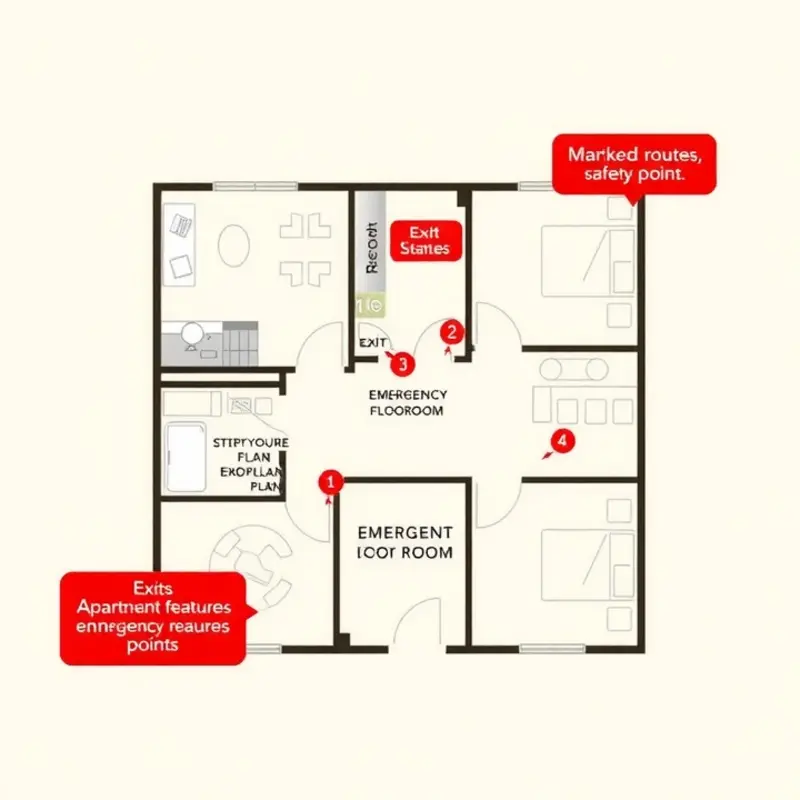
Designing an evacuation plan is more than simply knowing your exits. It begins with a thorough understanding of your apartment layout. Each room, hallway, and entry point plays a critical role. Use a floor plan to mark all possible escape routes. Identify the shortest and safest path from every room to an exit. This helps in reducing confusion and speeding up the evacuation process.
Apartments come with unique challenges, such as higher floors and dense living spaces. Knowing your building’s emergency exits is crucial. Always have at least two exit strategies. In case your primary route is blocked, an alternative must be readily available. Stairwells are typically the safest option during a fire, as elevators may become dangerous.
Establishing a reliable communication strategy is another integral step. Designate a safe meeting point outside the building where all household members can gather after evacuation. This could be a nearby park, parking lot, or open space away from the building. Regularly discuss this point with everyone living with you.
Next, ensure that you have an emergency contact list. Include numbers for local emergency services, building management, and nearby friends or family. Save these contacts both on your mobile device and on paper, stored in an easily accessible location like an emergency preparedness kit.
An evacuation plan is incomplete without incorporating safety drills. Repeated practice makes evacuation more instinctive and less stressful. Conducting regular drills familiarizes everyone with the escape routes and meeting points. Realistic practice helps reveal flaws in your plan, allowing you to adjust as necessary.
Apartments often have unique hazards. Communicate with building management about any special safety features like fire escapes, and include these in your plan. Also, consider any personal factors such as children or pets. Tailor your plan to ensure the safety and inclusion of all occupants.
As part of your safety measures, consider implementing other safety habits in your apartment life. For example, reviewing these safe apartment laundry habits can minimize additional risks and contribute to your overall preparedness.
Lastly, take accessibility into account. If someone in your apartment has mobility challenges, identify specific needs during evacuation. This might involve assigning a buddy system or identifying an alternative pathway suitable for them. Share your plan with neighbors and building staff to build a community that looks out for each other.
Creating a personalized evacuation plan empowers you to handle emergencies with confidence. It’s about preparation, communication, and regular revisits to ensure the plan continues to meet your needs as circumstances change.
Essential Tools and Resources for a Hassle-Free Evacuation
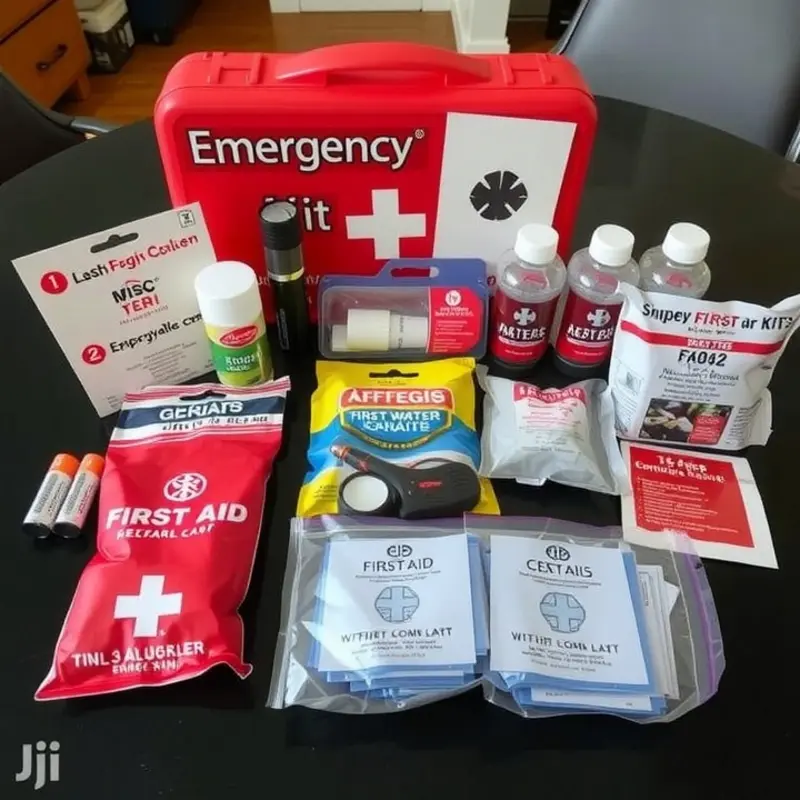
Preparation is more than a checklist—it’s about having the right tools accessible at critical moments. First, consider assembling a comprehensive safety kit. A well-stocked kit includes first-aid supplies, flashlights, batteries, and basic toiletries. Remember to update it annually, ensuring nothing has expired and personal needs are met.
Communication plays a pivotal role during evacuations. Mobile phones might be your first thought, but they aren’t fail-proof in widespread emergencies. Keep a battery-operated or hand-crank emergency radio on hand. These devices can receive important updates even when cell networks fail. Pair this with a printed list of emergency contacts, including family, local friends, and emergency services.
For those tech-savvy renters, apps that provide real-time weather alerts and evacuation routes can be invaluable. However, expect technology to occasionally falter. That’s where pre-planned meeting points come into play. Designate a nearby and an out-of-town meeting spot with your family or roommates, should communication break down completely.
Consider safety beyond individual arrangements. Install window safety netting to prevent falls and improve security, a practice outlined in this guide. It’s a precaution that strengthens your everyday safety infrastructure.
Local emergency contacts are as crucial as personal ones. Include numbers for local police, fire department, and utility companies in your contact list. Know your building management’s emergency plan and their contact information. Landlords or property managers often have procedures in place and can provide valuable support.
Shoes, clothing, or bedding seem insignificant until faced with extreme weather. Ensure everyone in your household has a go-bag with weather-appropriate clothing and some food and water supplies. Stowing a blanket or sleeping bag can increase comfort if shelter conditions are poor.
Pets often complicate emergency plans. Arrange carrying cases or harnesses readily available for safe transport. Keep a week’s worth of food and water for them as well. Local shelters may not accommodate pets, so knowing pet-friendly evacuation centers becomes essential.
Lastly, consider the financial aspects. Keep a small amount of cash, as credit card machines might not function during power outages. Additionally, ensure important documents, like identification and insurance papers, are secured in waterproof containers for easy access and safe travel.
Having the right tools is essential, but putting personal safety first can make evacuations more secure and less daunting. Incorporating equipment, communication plans, and local resources forms the backbone of a thorough evacuation strategy, preparing you to face uncertainties with confidence.
Final words
Preparing an evacuation plan is about taking proactive steps that prioritize your safety and security. Make your plan simple enough to follow under stress, and ensure you routinely update it with current information regarding emergency contacts and resources. Remember, knowledge and preparedness are your best tools. Regularly practicing evacuation drills can also help create a calming familiarity with your plan. As you make these preparations, you’ll not only feel more secure in your living space but also equip yourself to face the unexpected with confidence. In times of emergency, every second counts, so take action today to protect yourself and your home.

